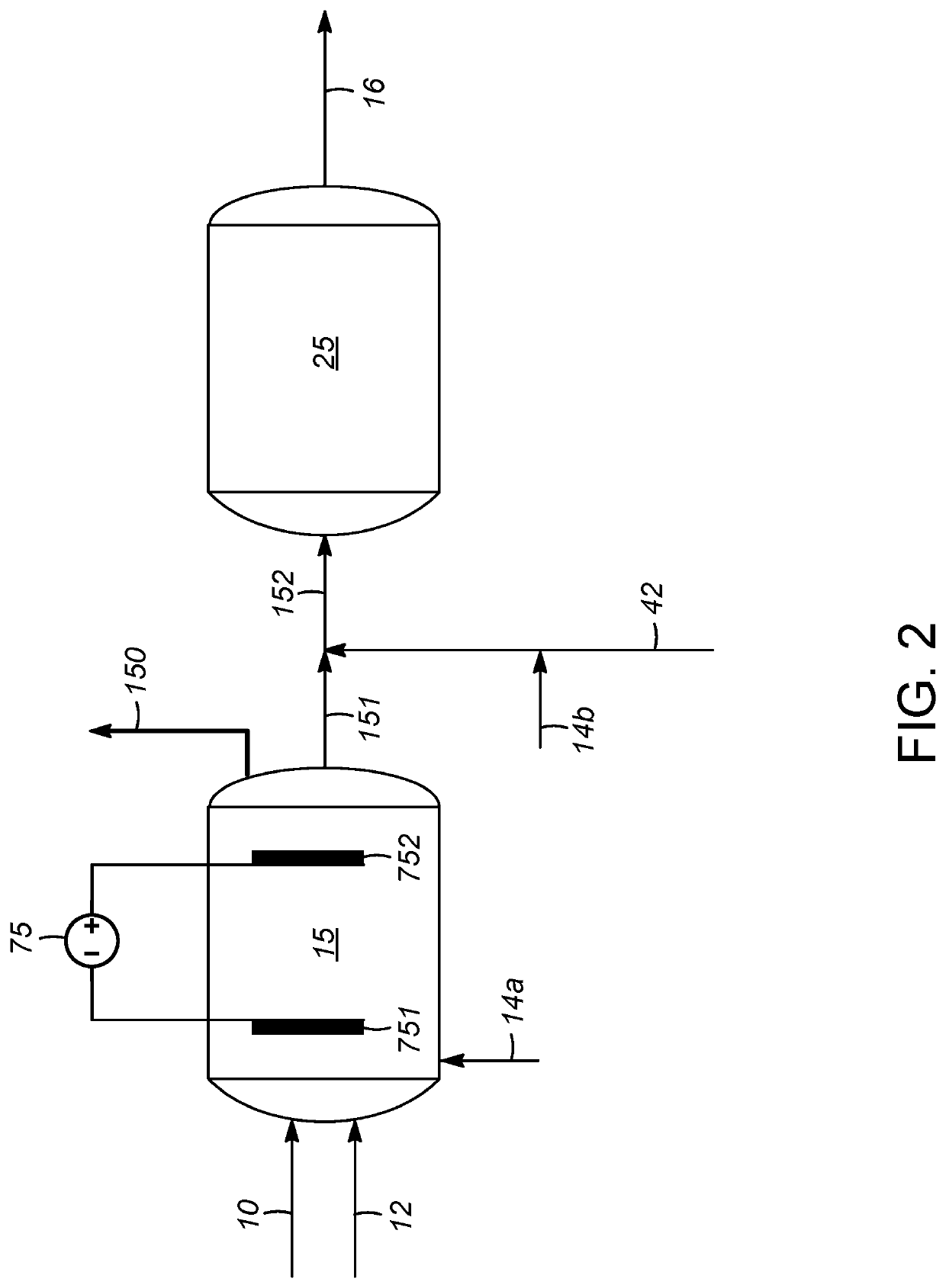Liquid phase reforming of oxygenates for hydrogen production
a technology of oxygenate and liquid phase, which is applied in the direction of chemical/physical/physical-chemical processes, energy-based chemical/physical/physical-chemical processes, chemical/physical/physical-chemical processes, etc., can solve the problems of high operating temperature, high operating temperature, and large relative cost of methane as liquefied natural gas (lng), so as to minimize limitations in mass transfer and facilitate miscibility , the effect of avoiding the effect of carbon emissions
- Summary
- Abstract
- Description
- Claims
- Application Information
AI Technical Summary
Benefits of technology
Problems solved by technology
Method used
Image
Examples
Embodiment Construction
[0020]The expressions “wt-%” and “vol-%,” are used herein to designate weight percentages and volume percentages, respectively. The expressions “wt-ppm” and “vol-ppm” are used to designate weight parts per million and volume parts per million, respectively. Concentrations of liquid phase components are generally reported in terms of wt-% (or wt-ppm), whereas concentrations of gas phase components are generally reported in terms of vol-% (or vol-ppm). For ideal gases, “vol-%” is equal to molar percentage and vol-ppm is equal to molar parts per million.
[0021]Processes are disclosed herein for liquid phase reforming (LPR), with particular embodiments of the invention being directed to the reforming of one or more oxygenated C,H-containing compounds. The term “oxygenated C,H-containing compound” is meant to embrace compounds comprising carbon, hydrogen, and oxygen atoms, with a preference toward compounds made up exclusively of these atoms and no other types of atoms. Examples include a...
PUM
| Property | Measurement | Unit |
|---|---|---|
| temperature | aaaaa | aaaaa |
| temperatures | aaaaa | aaaaa |
| aqueous | aaaaa | aaaaa |
Abstract
Description
Claims
Application Information
 Login to View More
Login to View More - R&D Engineer
- R&D Manager
- IP Professional
- Industry Leading Data Capabilities
- Powerful AI technology
- Patent DNA Extraction
Browse by: Latest US Patents, China's latest patents, Technical Efficacy Thesaurus, Application Domain, Technology Topic, Popular Technical Reports.
© 2024 PatSnap. All rights reserved.Legal|Privacy policy|Modern Slavery Act Transparency Statement|Sitemap|About US| Contact US: help@patsnap.com









